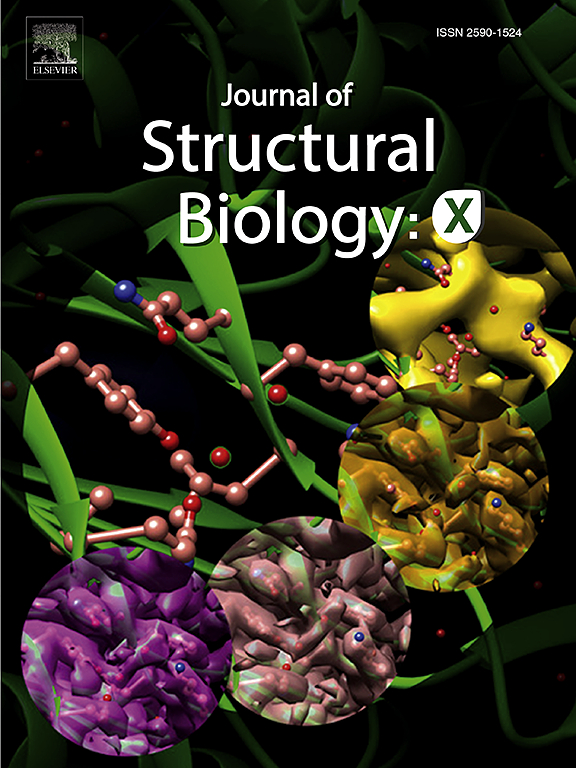MRGPRX2配体:分子模拟揭示了配体与受体相互作用的三种类型。
IF 2.7
3区 生物学
Q3 BIOCHEMISTRY & MOLECULAR BIOLOGY
引用次数: 0
摘要
简介:肥大细胞相关G蛋白偶联受体(MRGPR) X2是一种已知可被各种大小、电荷和来源的配体激活的肥大细胞受体。我们的目标是更深入地了解不同MRGPRX2配体的结合过程和配体与受体的相互作用,以确定受体激活的关键结构元件。材料与方法:我们使用Cao等人、Yang等人在2021年Nature中描述的MRGPRX2的三维结构,在模拟生理条件下计算模拟MRGPRX2与小分子配体的相互作用。结果:对GPCR结合口袋内MRGPRX2配体的对接和对接后采样,鉴定了蛋白质-配体相互作用的关键结构特征。在配体方面,我们通过比较不同的配体绘制在受体上,获得了不同分子模式或化学基团的覆盖。这些关键特征包括MRGPRX2配体的至少一个质子化胺片段,有助于一个盐桥和一个π-阳离子相互作用,以及配体表面扩展的非极性结构域,提供疏水隔离和/或π-堆叠相互作用。在受体中,我们发现氨基酸(GLU164、ASP184、PHE101、PHE170、TRP243、PHE244和PHE257)通过氢键、盐桥、π-阳离子相互作用和π-π堆叠与配体特异性相互作用,直接结合并最终激活受体。讨论:我们通过分子建模获得的配体-受体相互作用的见解可以帮助预测MRGPRX2通过肥大细胞激活包括不良反应,并促进MRGPRX2拮抗剂的开发,用于治疗肥大细胞介导的疾病。本文章由计算机程序翻译,如有差异,请以英文原文为准。

MRGPRX2 ligandome: Molecular simulations reveal three categories of ligand-receptor interactions
Introduction
Mas-related G protein-coupled receptor (MRGPR) X2 is a mast cell receptor known to be activated by a wide range of ligands of various size, charge and origin. Our aim is to gain a deeper understanding of the binding processes of the different MRGPRX2 ligands and the ligand-receptor interactions in order to identify crucial structural elements for receptor activation.
Materials and methods
We used the three-dimensional structure of MRGPRX2 described in Nature in 2021 by Cao et al. and Yang et al. to computationally model the interaction between MRGPRX2 and small molecule ligands under simulated physiological conditions.
Results
Docking and post-docking samplings of the MRGPRX2 ligandome within the GPCR binding pocket led to the identification of key structural features for protein–ligand interactions. On the ligand side, we obtained an overlay of different molecular patterns or chemical groups by comparing different ligands plotted on the receptor. These key features include at least one protonated amine moiety of MRGPRX2 ligands contributing to one salt-bridge and one π-cation interaction, as well as an extended non-polar domain of the ligand surface that offer hydrophobic segregation and/or π-stacking interactions. In the receptor, we identified amino acids (GLU164, ASP184, PHE101, PHE170, TRP243, PHE244 and PHE257) that specifically interact via hydrogen bonding, salt-bridges, π-cation interactions and π-π stacking with the ligands to direct binding and ultimately receptor activation.
Discussion
Our insights into ligand-receptor interaction obtained by molecular modeling can help to predict mast cell activation via MRGPRX2 including adverse reactions, and facilitate the development of MRGPRX2 antagonists for the treatment of mast cell-mediated diseases.
求助全文
通过发布文献求助,成功后即可免费获取论文全文。
去求助
来源期刊

Journal of structural biology
生物-生化与分子生物学
CiteScore
6.30
自引率
3.30%
发文量
88
审稿时长
65 days
期刊介绍:
Journal of Structural Biology (JSB) has an open access mirror journal, the Journal of Structural Biology: X (JSBX), sharing the same aims and scope, editorial team, submission system and rigorous peer review. Since both journals share the same editorial system, you may submit your manuscript via either journal homepage. You will be prompted during submission (and revision) to choose in which to publish your article. The editors and reviewers are not aware of the choice you made until the article has been published online. JSB and JSBX publish papers dealing with the structural analysis of living material at every level of organization by all methods that lead to an understanding of biological function in terms of molecular and supermolecular structure.
Techniques covered include:
• Light microscopy including confocal microscopy
• All types of electron microscopy
• X-ray diffraction
• Nuclear magnetic resonance
• Scanning force microscopy, scanning probe microscopy, and tunneling microscopy
• Digital image processing
• Computational insights into structure
 求助内容:
求助内容: 应助结果提醒方式:
应助结果提醒方式:


